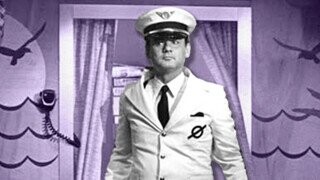The First ‘SNL’ Movie Is An Absurdist Masterpiece Almost No One Has Seen

While there hasn’t been a Saturday Night Live-inspired movie in a while (fingers crossed for What Up With That: The Motion Picture), there sure have been a lot of them over the years — from the masterpiece that is Wayne's World to, well, whatever the hell A Night at the Roxbury is.
But what was the very first SNL movie? Some may argue that it was The Blues Brothers, which began as a sketch/likely cocaine-inspired goof during the show's first season. However, I’d argue that the very first narrative feature film that was made by SNL creatives, starred SNL cast members, and importantly, produced by Lorne Michaels was a movie virtually no one has seen: 1984’s Nothing Lasts Forever.
Don't Miss
Not to be confused with the wacky book Die Hard is based on, Nothing Lasts Forever is a strange tale about a struggling artist (played by Zach Galligan from Gremlins) living in a dystopian future (or maybe past?) New York City, where he ends up being taken in by a subterranean cult of unhoused old men, then sent on a bus ride to the moon, along with a group of senior citizens who have been secretly going on lunar shopping trips for decades. Oh, and it's mostly in black and white, shot in the style of a 1940s Hollywood musical.
The film was written and directed by Tom Schiller, one of the very first SNL writers who also produced a number of short films for the show over the years.
Although Nothing Lasts Forever co-starred Dan Aykroyd and Bill Murray and was even accepted into the Cannes film festival, MGM refused to release it, which seems harsh. Like, they released goddamn Ice Pirates that year.
And while it’s generally considered a “lost” film, Nothing Lasts Forever has aired on TCM in the past and, in recent years, occasionally pops up on YouTube before being yanked down — the point is, it’s available if you look hard enough. And it really is great. You can see why the studio was wary of its commercial prospects; they may have been expecting something along the lines of Stripes or Trading Places, but instead got a surreal fantasy that feels more like a Kafka novel than anything that came out of Studio 8H.
Again, this isn’t a Day the Clown Cried situation; there are prints of the film around, but the rights holders still won’t make it widely available for some annoying reason. This is especially frustrating because one of the film’s great strengths is its distinct visual style, which doesn’t exactly shine through when you’re watching a legally-iffy stream of a garbled old VHS tape that’s in worse condition than the Ring video.
You (yes, you) should follow JM on Twitter (if it still exists by the time you’re reading this).